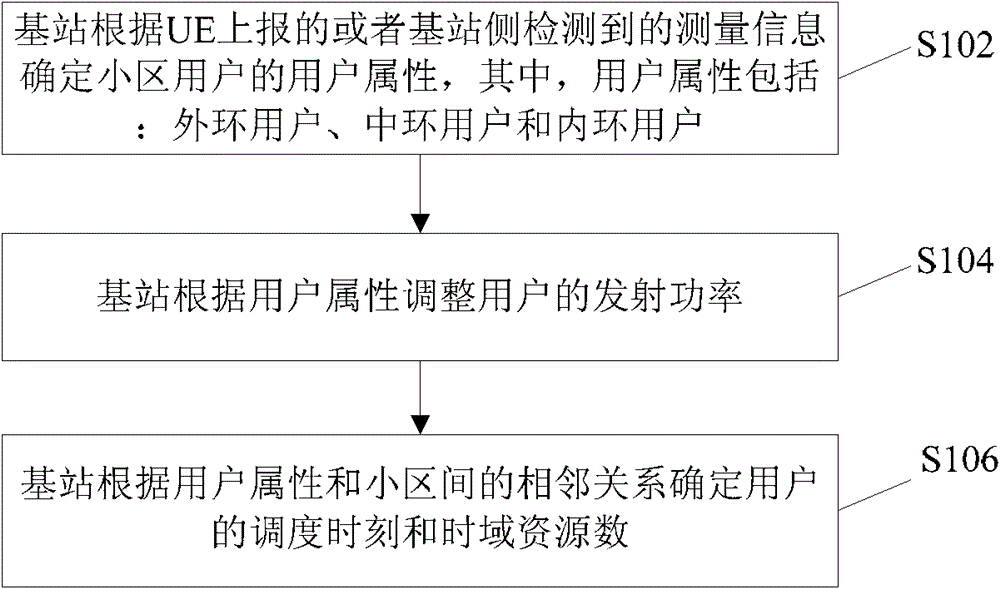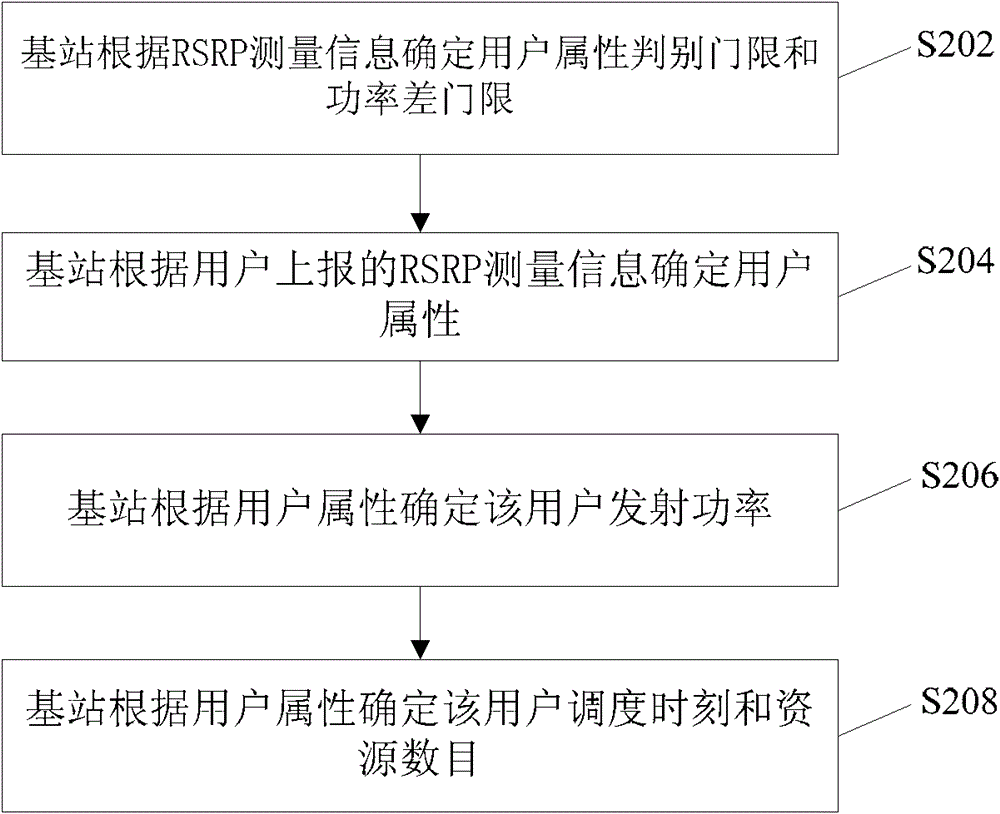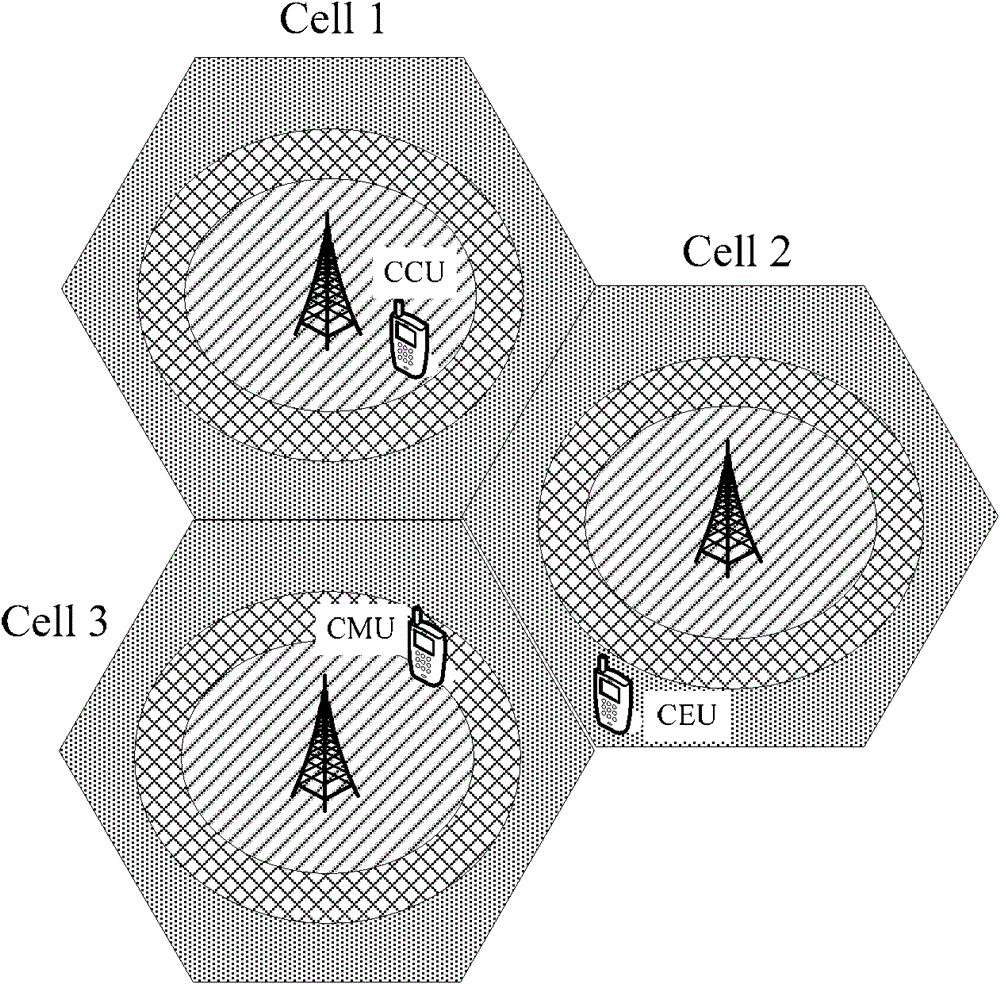Inter-cell interference coordination method and base station
An inter-cell interference and coordination method technology, applied in the field of communication, can solve the problems of excessive cell edge users and low system resource utilization, and achieve the effect of improving system capacity and improving system resource utilization.
- Summary
- Abstract
- Description
- Claims
- Application Information
AI Technical Summary
Problems solved by technology
Method used
Image
Examples
Embodiment 1
[0029] figure 1 is a flow chart of a method for coordinating inter-cell interference according to Embodiment 1 of the present invention, as shown in figure 1 shown, including the following steps:
[0030] Step S102, the base station determines the user attributes of the cell users according to the measurement information reported by the UE or detected by the base station side, where the user attributes include: outer-ring users, middle-ring users and inner-ring users.
[0031] Step S104, the base station adjusts the transmit power of the user according to the user attribute.
[0032] In step S106, the base station determines the scheduling time and the number of time domain resources of the user according to the user attribute and the adjacent relationship between the cells.
[0033] In this embodiment, the base station improves the original user classification according to the acquired measurement information, and divides the cell users into outer-ring users, middle-ring us...
Embodiment 2
[0038] figure 2 is a flow chart of a method for coordinating inter-cell interference according to Embodiment 2 of the present invention, as shown in figure 2 shown, including the following steps:
[0039] Step S202, the base station calculates the difference △RSRP between the RSRP of the UE's own cell and the strongest neighboring cell according to the RSRP measurement information reported by the UE, and then sorts the △RSRP of all UEs from small to large, and sets T1 to 30% CDF△RSRP , T2 is 60% CDF△RSRP. At the same time set D1 = 3dB, D2 = 3dB.
[0040] In step S204, the base station judges and distinguishes user attributes according to preset user attribute discrimination thresholds T1 and T2 and measurement information reported by users such as RSRP. If the measurement result of a user △RSRP=T2, the user is identified as an inner-ring user; if the measurement result of a user T1 image 3 It is a schematic diagram of user attribute discrimination according to Embodiment ...
Embodiment 3
[0044] Figure 5 is a flow chart of a method for coordinating inter-cell interference according to Embodiment 3 of the present invention, as shown in Figure 5 shown, including the following steps:
[0045] Step S502 , the base station sorts the CQIs of all UEs from small to large according to the CQI measurement information reported by the UEs, and sets T1 to 30% CDF CQI, and T2 to 60% CDF CQI. At the same time set D1 = 3dB, D2 = 3dB. The method in this example can also be adapted to the case where the measurement information is RSRQ or reference signal new interference to noise ratio.
[0046] In step S504, the base station judges and distinguishes user attributes according to preset user attribute discrimination thresholds T1 and T2 and measurement information reported by users such as CQI. If the measurement result of a certain user is CQI=T2, the user is identified as an inner ring user; if the measurement result of a user is T1 image 3 .
[0047] Step S506, the base ...
PUM
 Login to View More
Login to View More Abstract
Description
Claims
Application Information
 Login to View More
Login to View More - R&D
- Intellectual Property
- Life Sciences
- Materials
- Tech Scout
- Unparalleled Data Quality
- Higher Quality Content
- 60% Fewer Hallucinations
Browse by: Latest US Patents, China's latest patents, Technical Efficacy Thesaurus, Application Domain, Technology Topic, Popular Technical Reports.
© 2025 PatSnap. All rights reserved.Legal|Privacy policy|Modern Slavery Act Transparency Statement|Sitemap|About US| Contact US: help@patsnap.com



